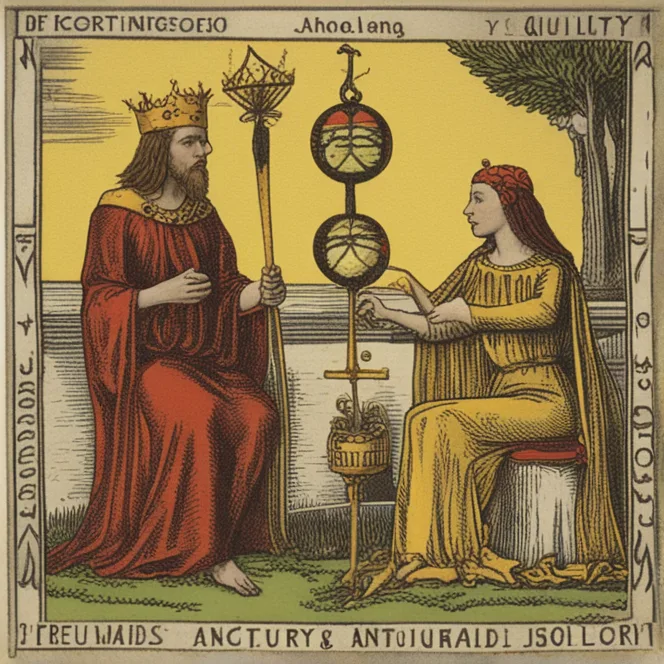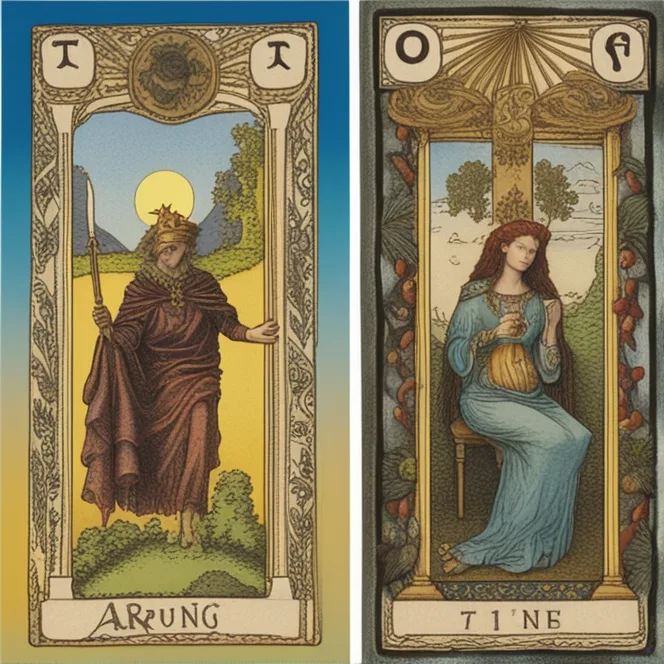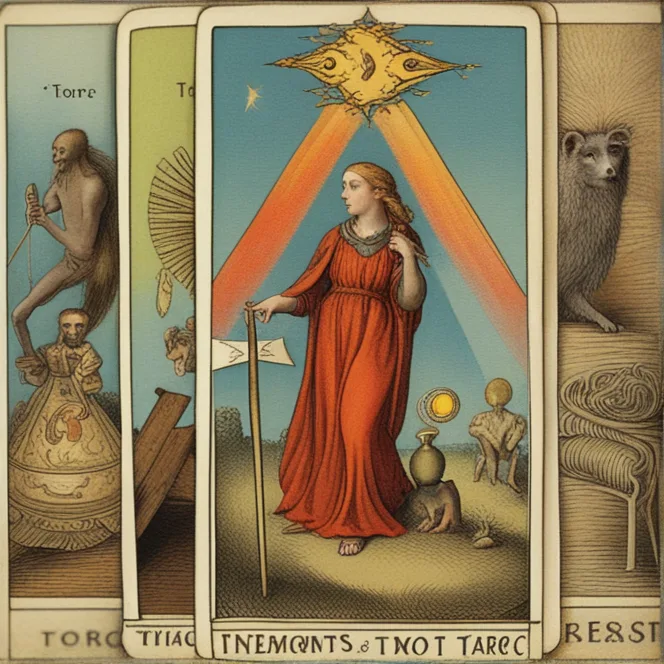
Roots in Antiquity
From the drawing rooms of medieval Europe to today's digital platforms, tarot has been a source of fascination and contemplation. But where did tarot originate? The history of tarot is a tapestry woven through ancient civilizations, shrouded in the mists of time. While many theories exist, some suggest the tarot's symbolism is linked to ancient Egyptian wisdom, thought to be preserved by the mystic order of the Rosicrucians. Others speculate a connection with the Kabbalistic Tree of Life. This mystical ancestry points to the profound spiritual and philosophical depths tarot cards can tread.

Transition to Europe
Tarot's more verifiable journey begins in the 15th century, where they emerge in Europe as playing cards known as 'tarocchi' or 'tarock.' Initially used for games, the tarot featured the same suits we see in modern playing cards, but with an added suit of trumps or 'triumphs.' These trumps later evolved into what we recognize now as the Major Arcana. Noble families in Italy are credited with commissioning the earliest sets, lavishly decorated and often used to display wealth and sophistication rather than foretell futures.

Evolution into Mysticism
The mystical turn came in the 18th century when scholars like Antoine Court de Gébelin proposed that tarot had ancient Egyptian roots, and the cards held secret wisdom. A pivotal moment in tarot history was the involvement of occultists like Éliphas Lévi, who linked the tarot to Kabbalah and astrology, embedding it in Western esoteric lore. By the late 19th century, the Hermetic Order of the Golden Dawn further anchored tarot in the mystic practices of divination and meditation, making it a tool for accessing the subconscious and the divine.

Modern Tarot Systems
Many tarot decks today are derivatives of the Rider-Waite-Smith deck, created in the early 20th century. The symbolism in the images crafted by artist Pamela Colman Smith under the instruction of mystic A.E. Waite is intentional, intended to reflect their understanding of tarot's ancient knowledge. The deck's widespread use owes to its detailed representational images that provide clear narrative symbolism—a departure from more traditional decks' simpler designs. This has allowed tarot readings to become more accessible and popularized, opening the practice to wider interpretation and use.

A Tool for the Modern Mystic
Today, tarot has transcended its mystical origins to become a multifaceted tool used for self-reflection, psychoanalysis, and even creative inspiration. Contemporary tarot readers may draw upon its storied history or apply a more psychological approach, leveraging the archetypal imagery to facilitate personal insight. The cards thus serve as a bridge between past and present, the sacred and the everyday, the conscious and the unconscious.
Enduring Legacy
Tarot's appeal lies in its enduring mystery and versatility. Whether tracing back to ancient wisdom traditions or its utilitarian use in Renaissance Europe, tarot has always been a mirror of the human experience. Its resilience and evolution through the centuries is a testament to the never-ending quest for self-exploration and understanding. As tarot continues to find new adherents in the digital age, its journey, much like the fool's journey depicted in its cards, seems to be an infinite one.
Published: 12/7/2023
Modified: 12/7/2023
More predictions
Come back here soon to learn more about yourself and your future


Discovering Matrimonial Fate: Tarot Insights
Explore the enigmatic world of Tarot to unveil the mysteries of your future spouse and marital journey.


The Perceived Risks Of Tarot Readings
Examining the potential dangers of tarot card readings in spiritual and psychological contexts.


The Origins Of Tarot: Mystical Beginnings
Explore the mystical origins of Tarot, tracing its journey from ancient traditions to modern practice.